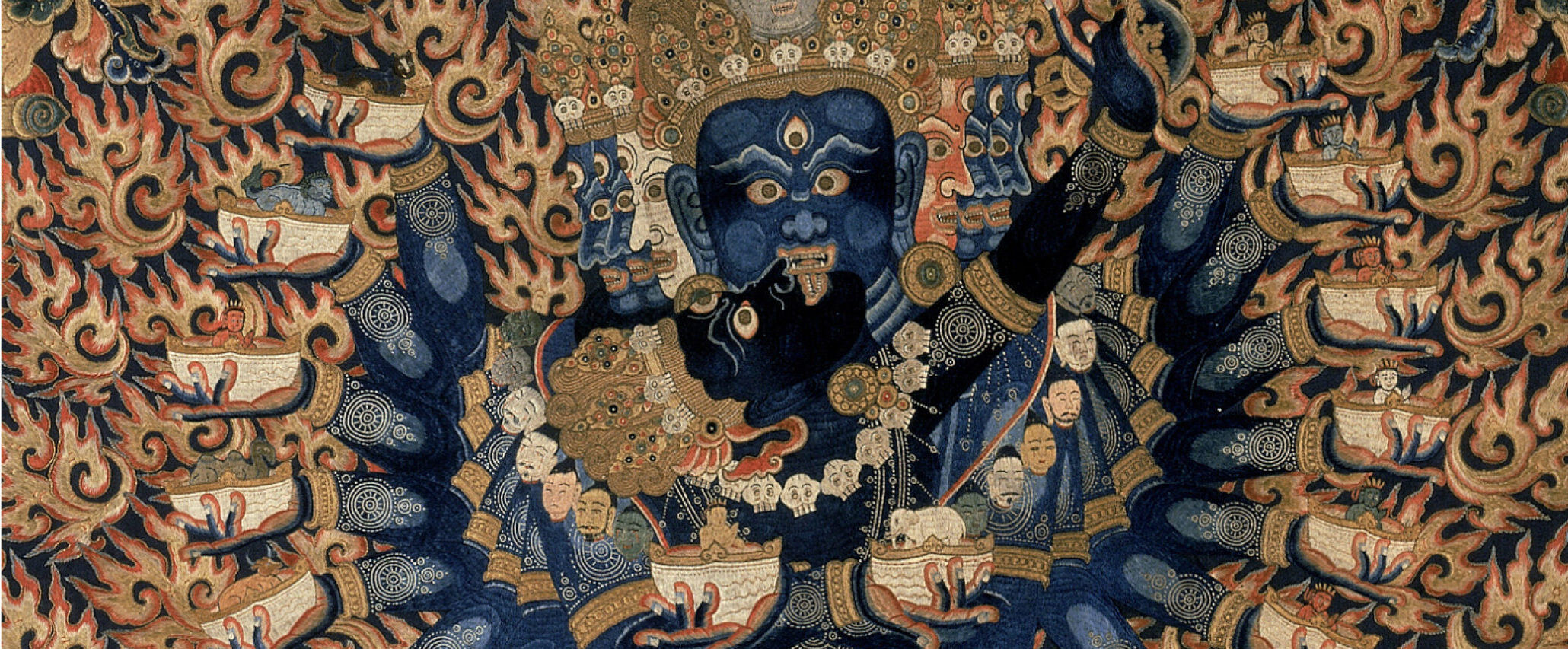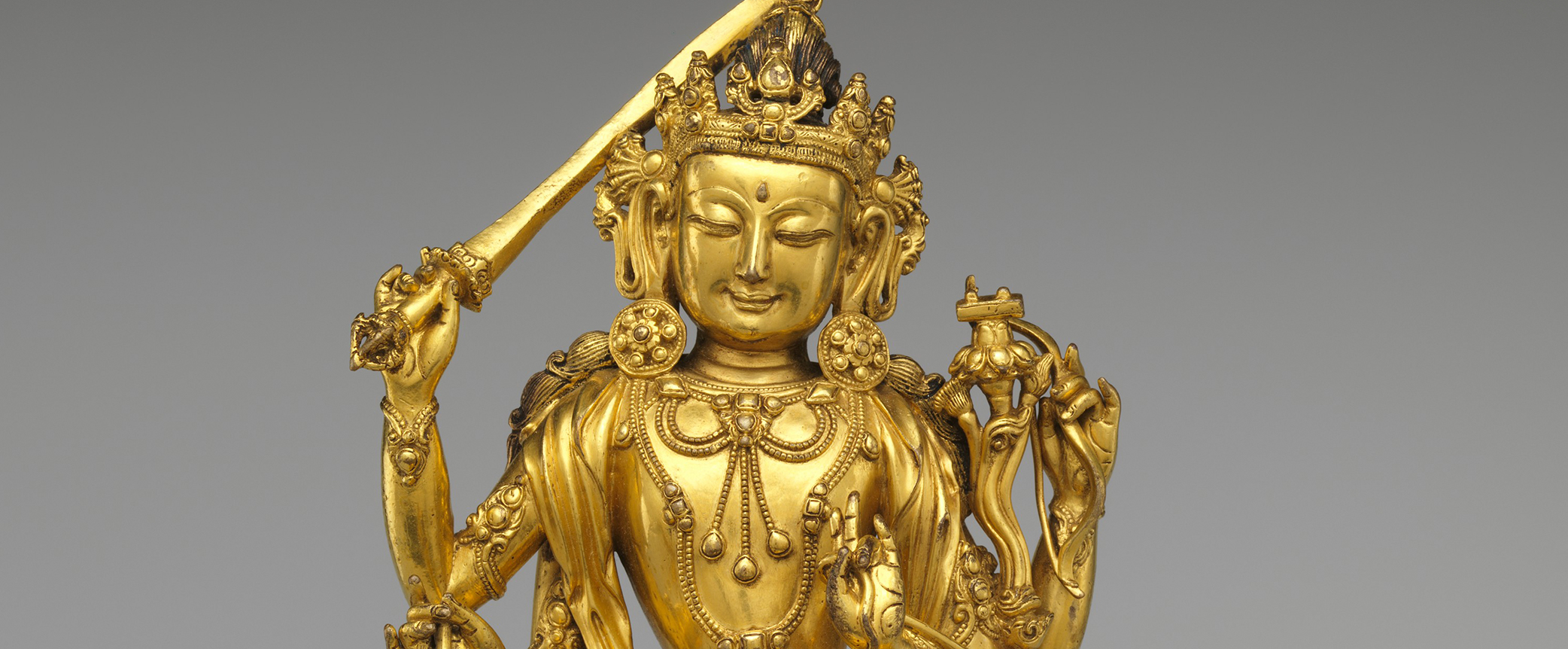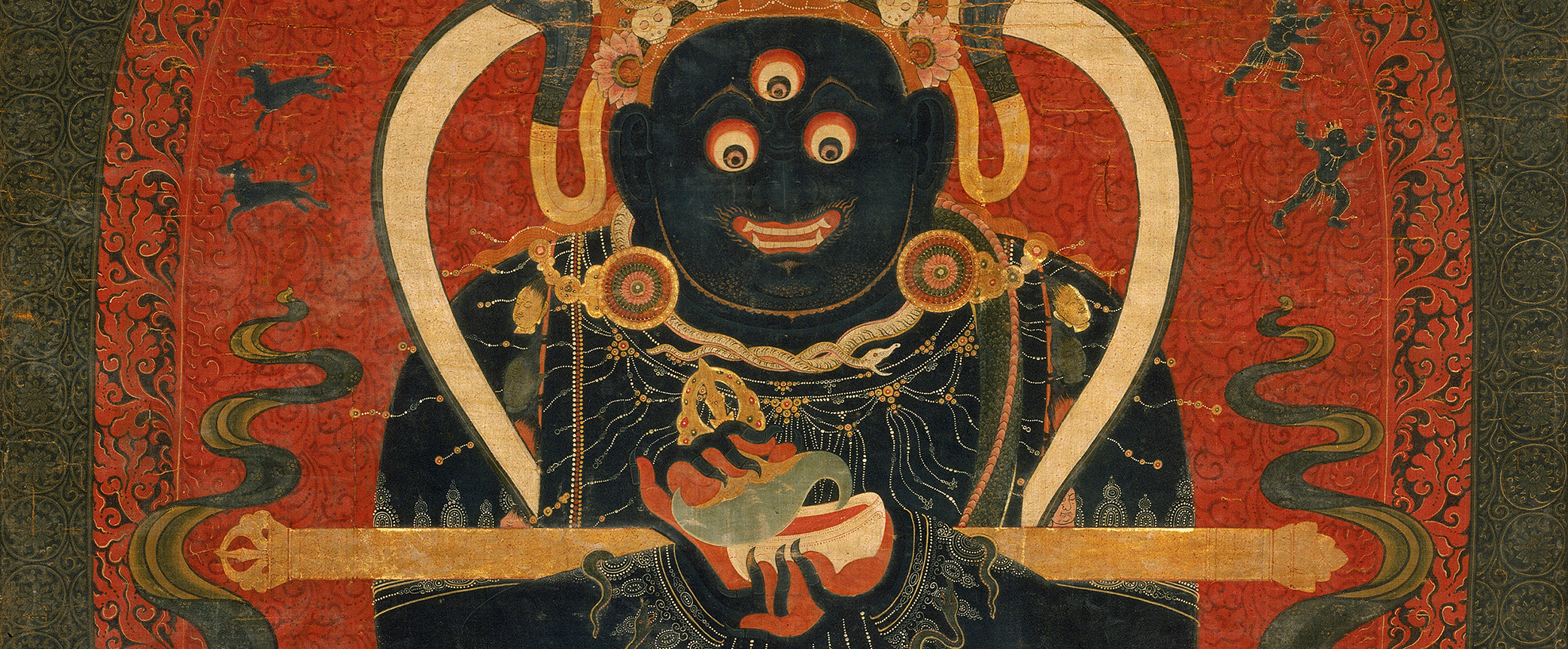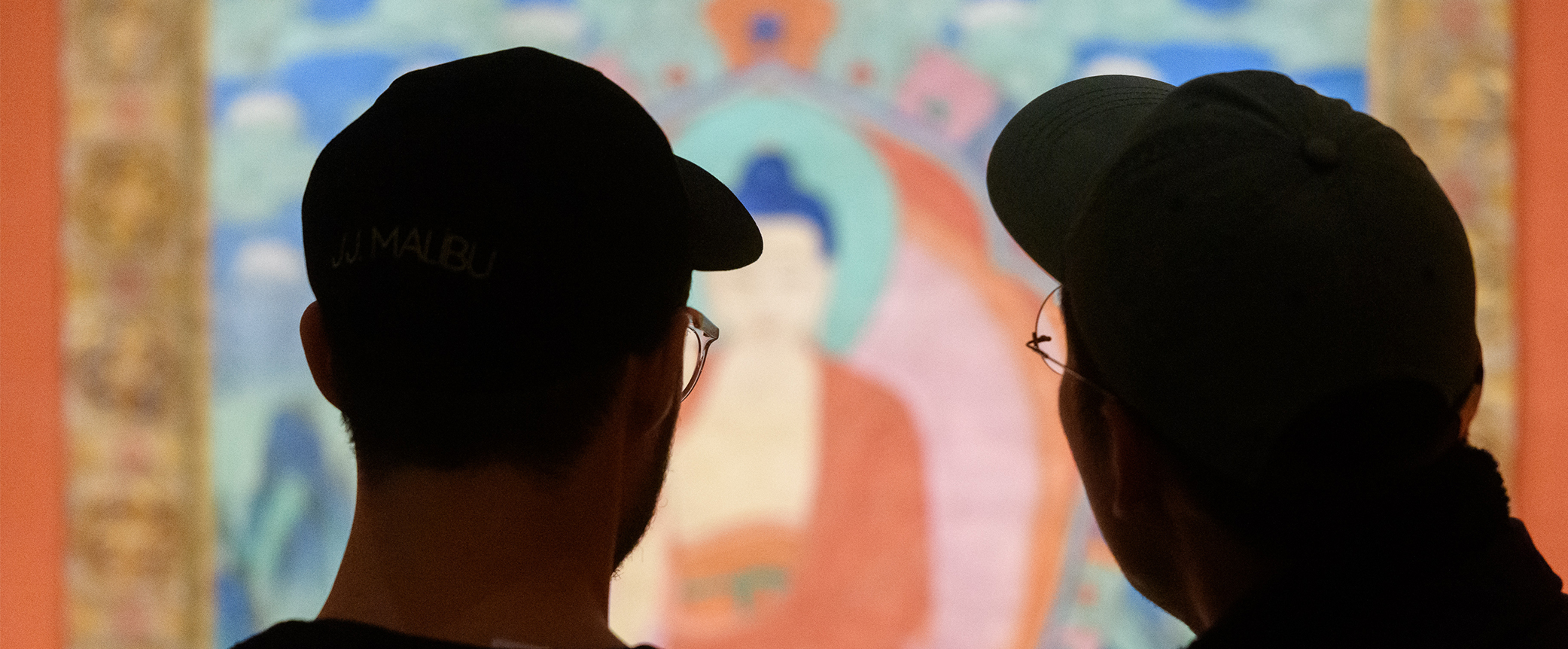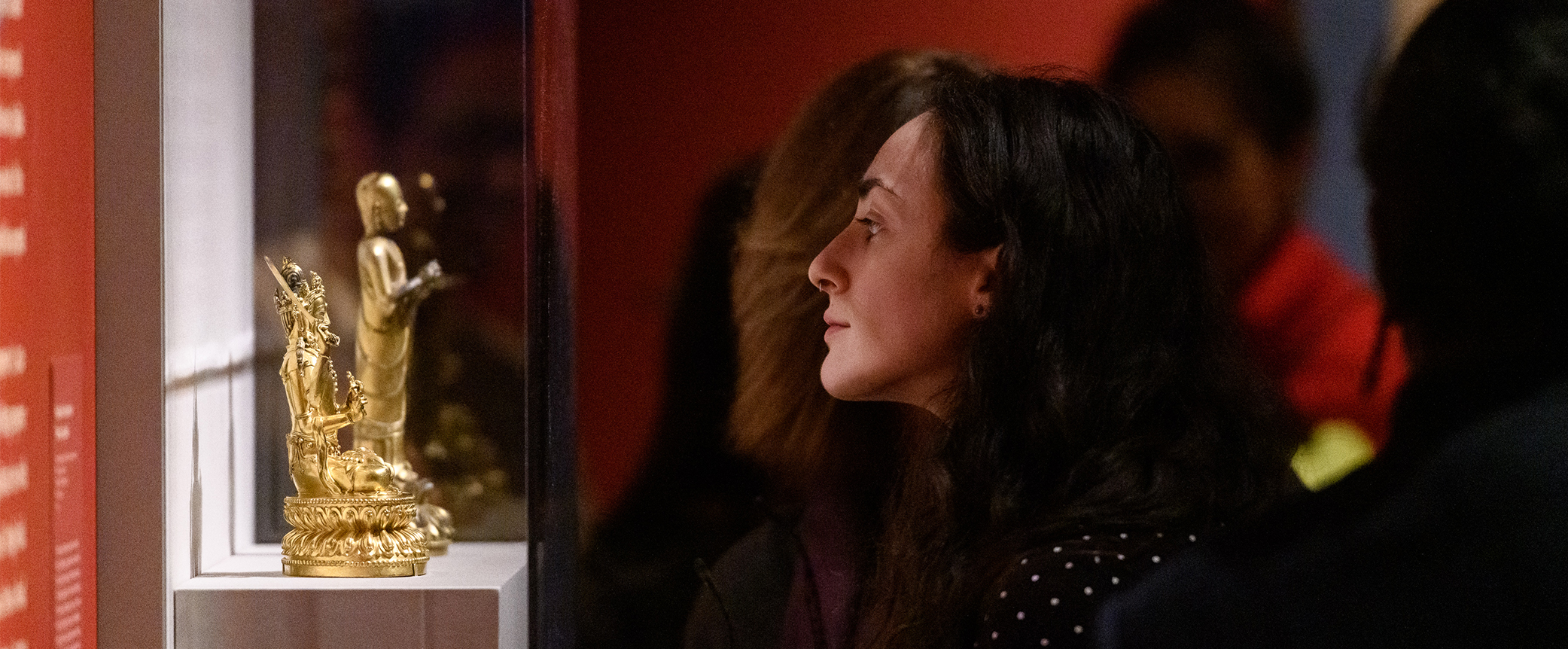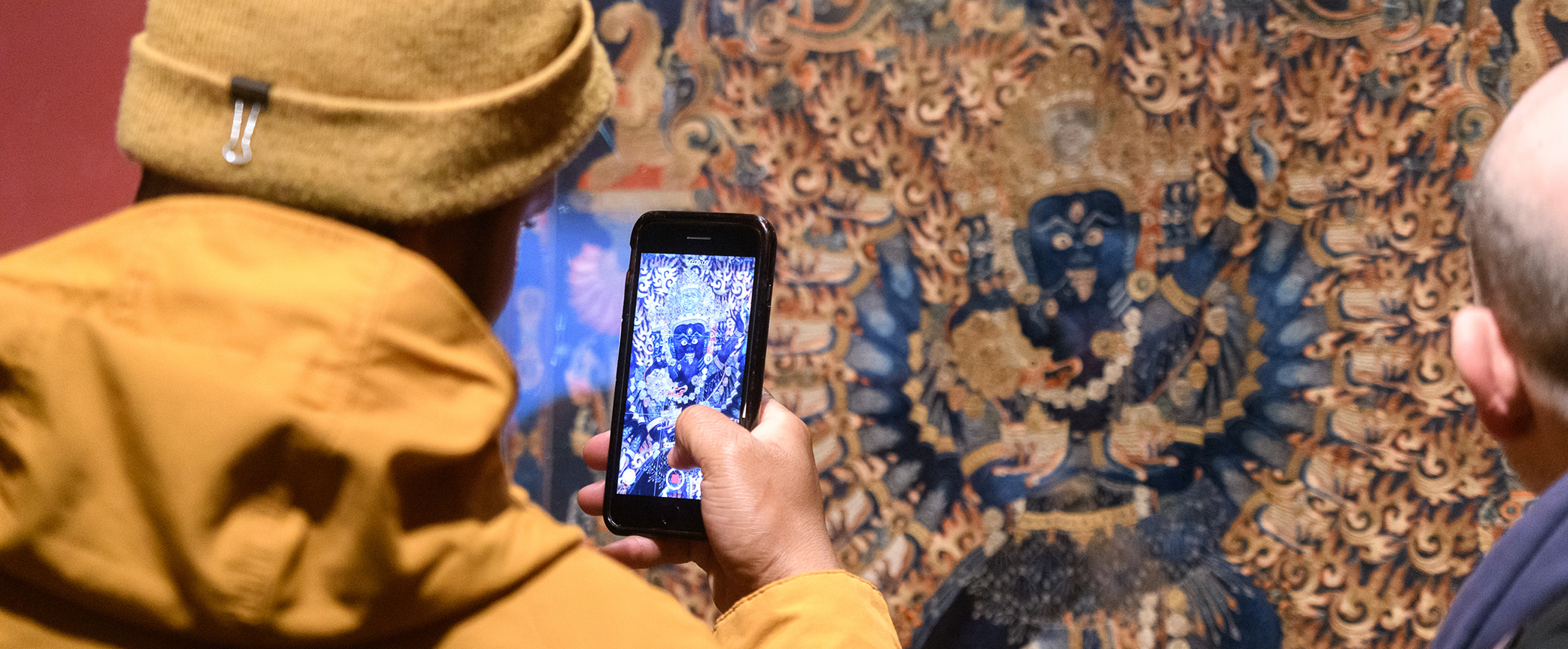
How do political leaders rise to power? What gives them the right to rule? In some governments today, we imagine power comes from the democratic consent of the people. In other systems, power can manifest through sheer might alone or could be transferred through religious mandate. The force of religion to claim political power is a global phenomenon, and Tibetan Buddhism once offered such divine means to power and legitimacy to rule.
Faith and Empire explores the dynamic historical intersection of politics, religion, and art in Tibetan Buddhism. Through more than 60 objects from the 8th to the 19th century, the exhibition illuminates how Tibetan Buddhism presented a model of universal sacral kingship, whereby consecrated rulers were empowered to expand their realm, aided by the employment of ritual magic. Images were a primary means of political propagation, integral to magical tantric rites and embodiments of its power.
By the 12th century, Tibetan Buddhist masters became renowned across Northern Asia as bestowers of this anointed rule and occult power. Tibetans also used the mechanism of reincarnation as a means of succession, a unique form of political legitimacy that they brought to empires to the east.
Through the lens of Tibetan Buddhism’s potent historic political role in Asia, Faith and Empire seeks to place Himalayan art in a larger global context and shed light on an important but little-known aspect of power in the Tibetan tradition.
“A real must-see” —The Wall Street Journal
“Magnificent presentation both in the quality of the art and the intellectual coherence of the conception” —A Rubin Museum visitor

Curated by Karl Debreczeny
The exhibition and catalog for Faith and Empire are made possible by Fred Eychaner, Edward & Elizabeth Gardner Foundation, Ann and Matt Nimetz, Zhou Yu Quan, the Zhiguan Museum of Fine Art, the Ellen Bayard Weedon Foundation, the E. Rhodes & Leona B. Carpenter Foundation, Lisina M. Hoch, Christopher Fussner, the Thomas and Frances Blakemore Foundation, the Neil Kreitman Foundation, Yury Khokhlov, Margot and Tom Pritzker, Carlton Rochell and Kathleen Kalista, and John Eskenazi.
The conference for Faith and Empire is co-organized by the Rubin Museum of Art and Columbia University and supported by the Monimos Foundation and the Weatherhead East Asian Institute Workshop and Conference Program Fund for 2018-2019.
List information as of March 7, 2019.

